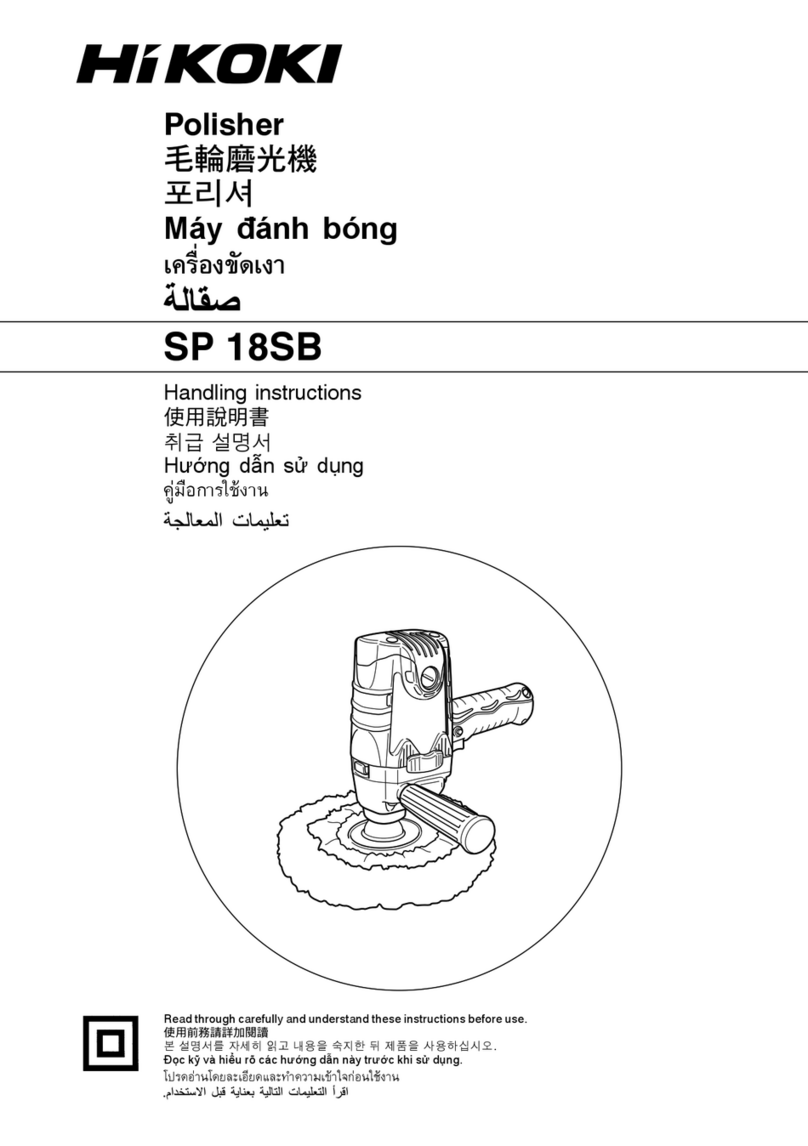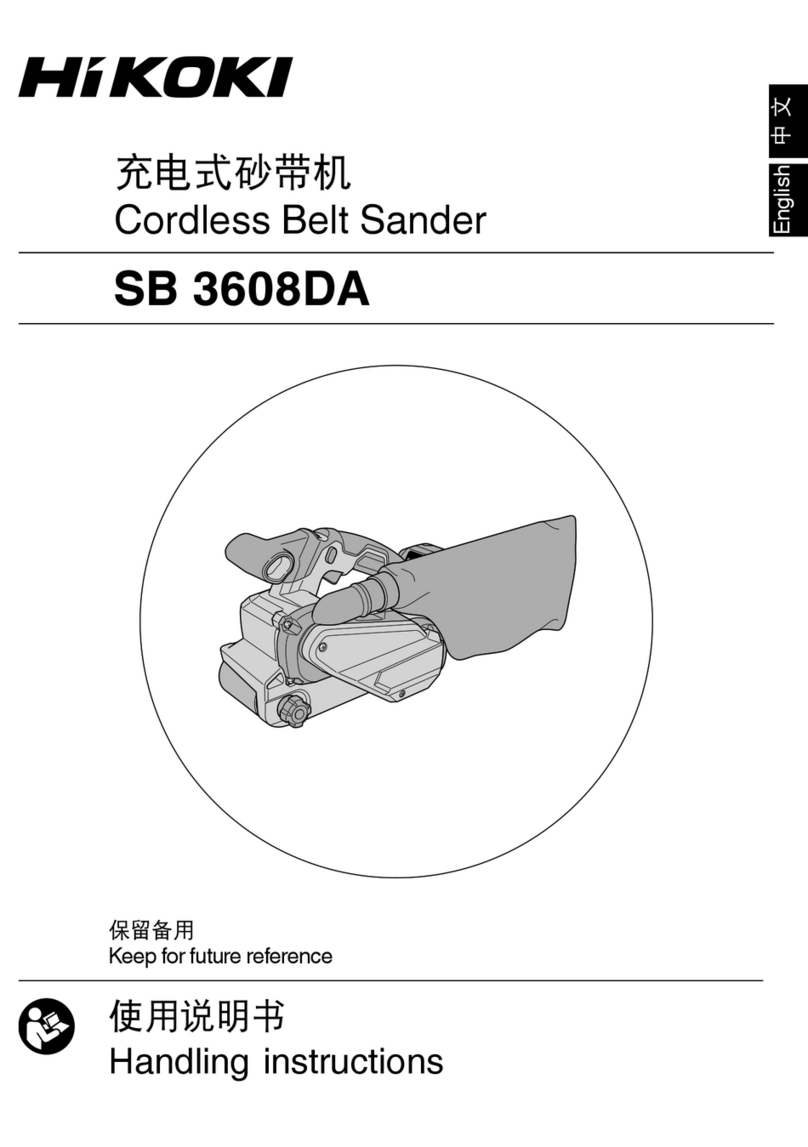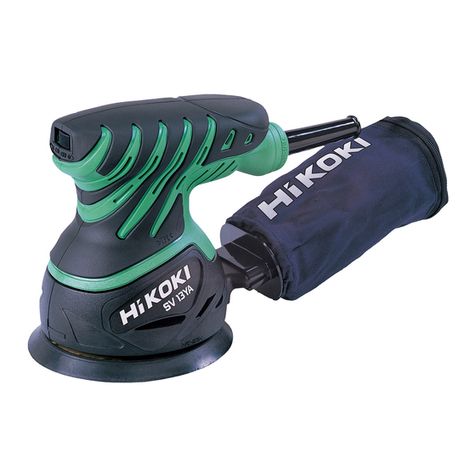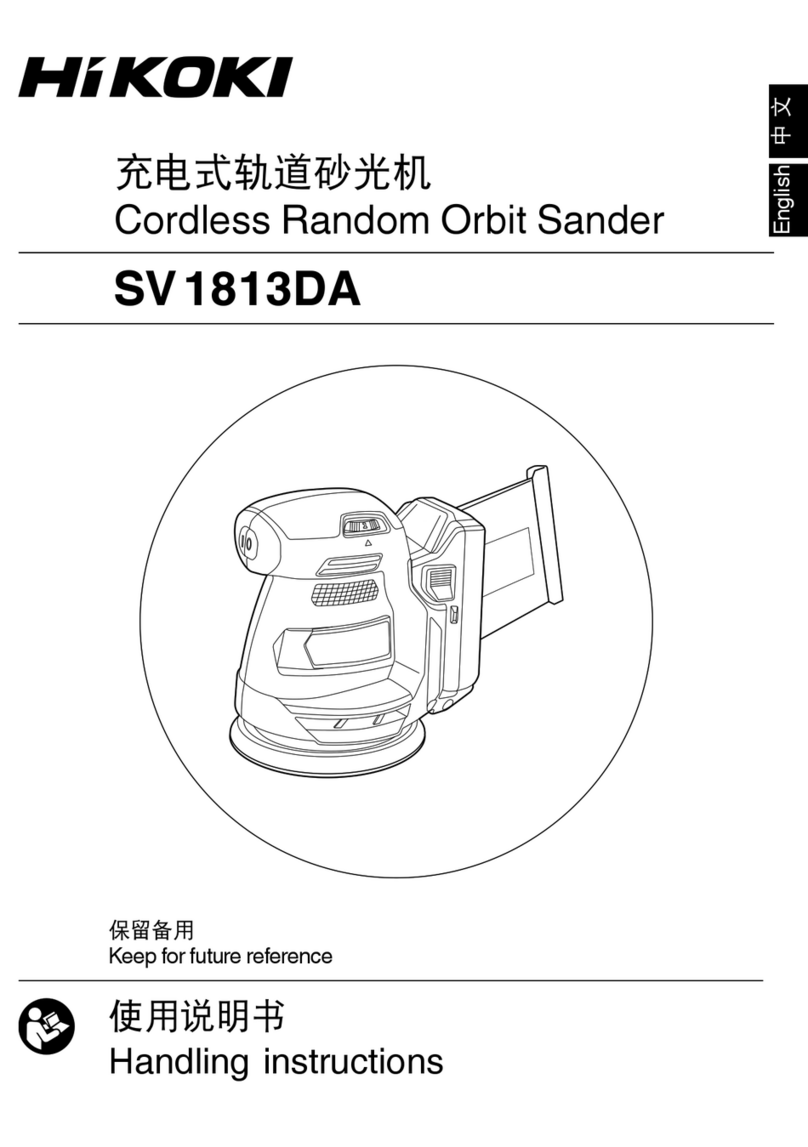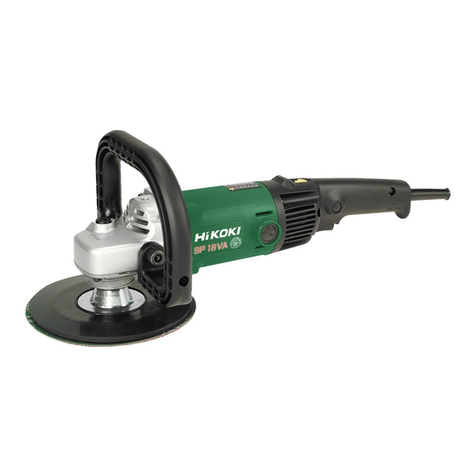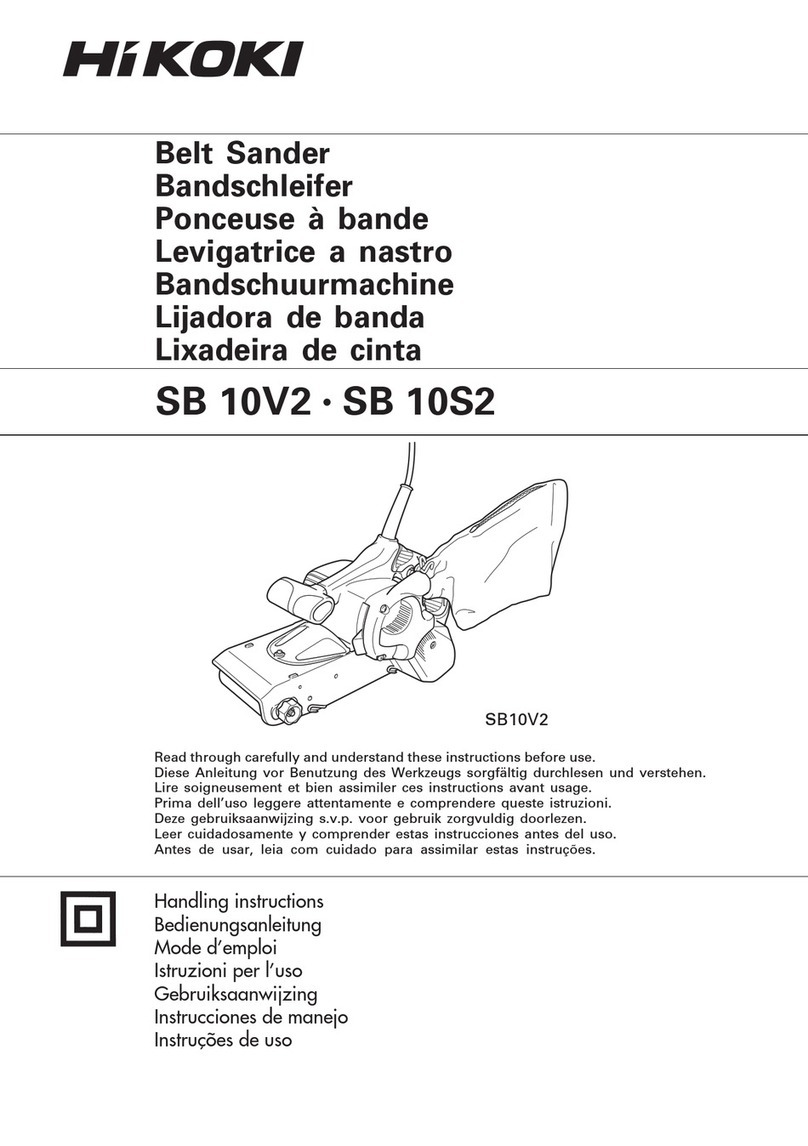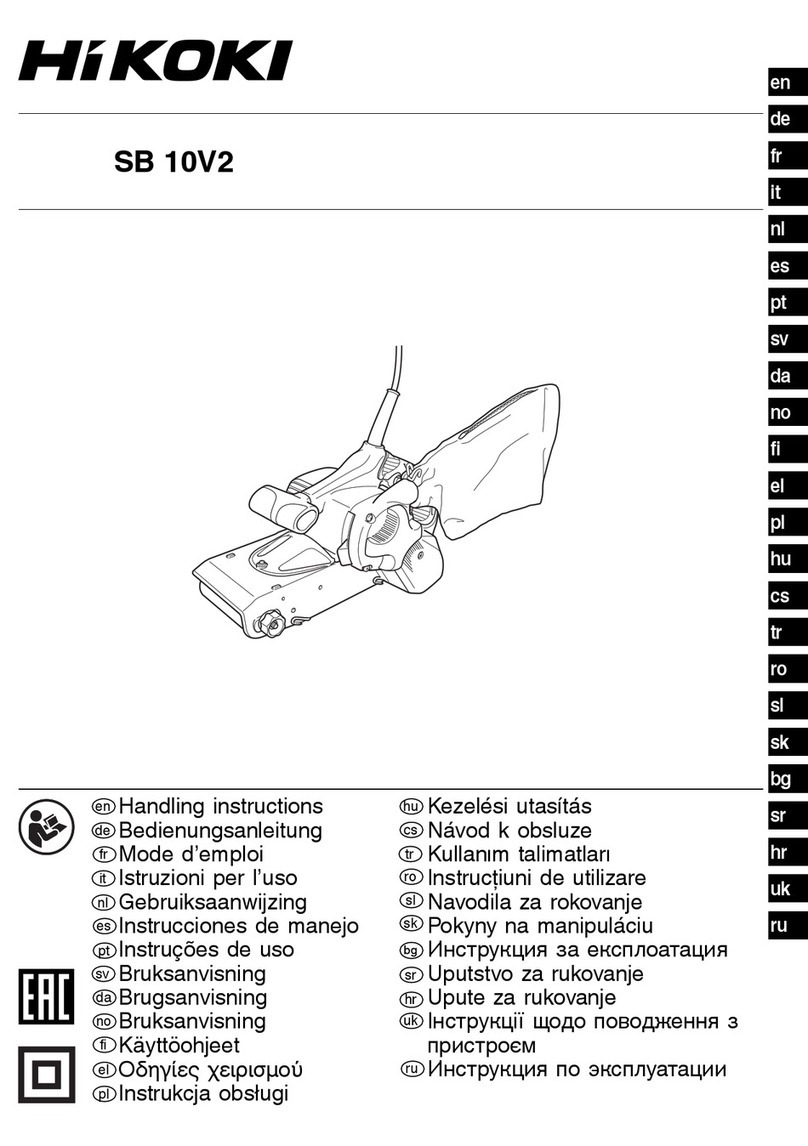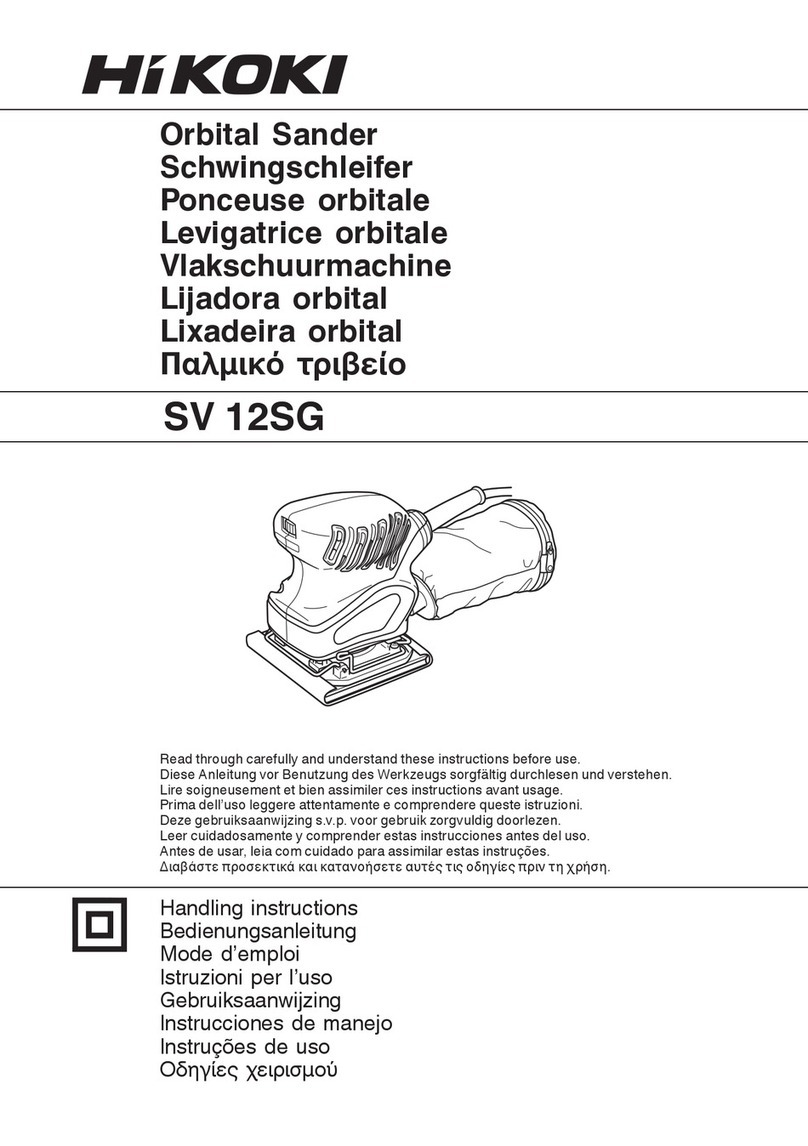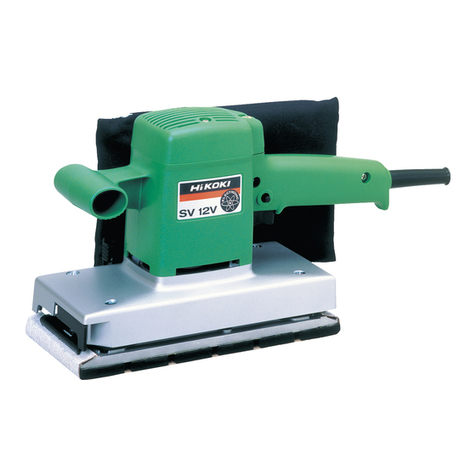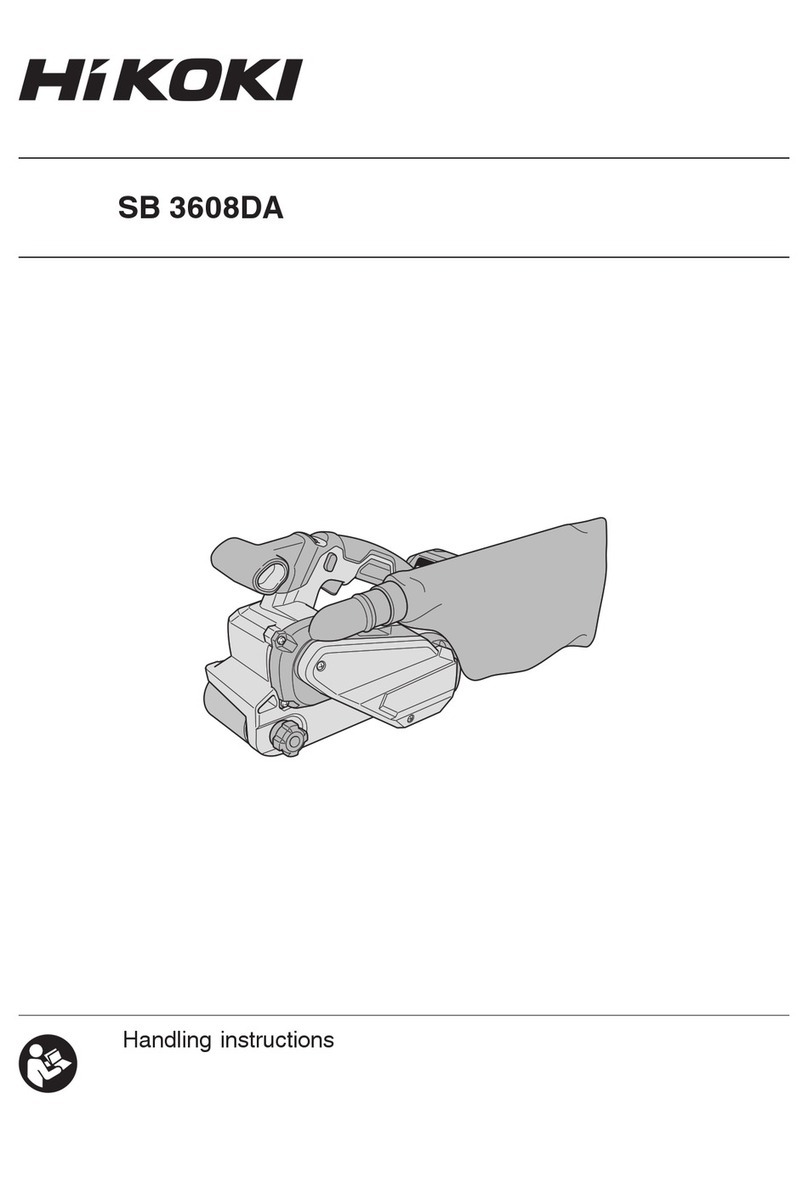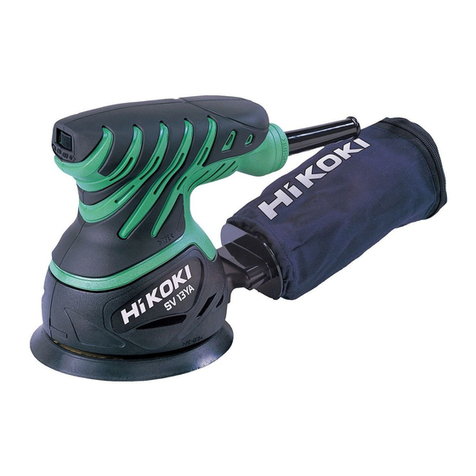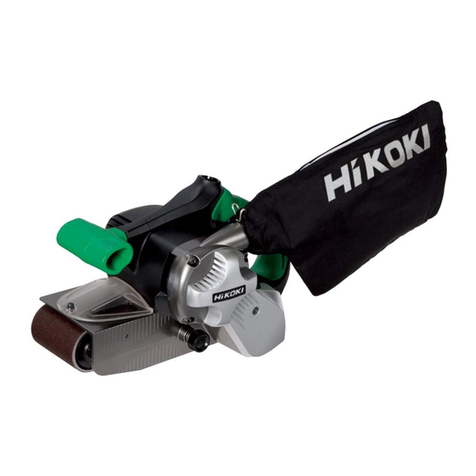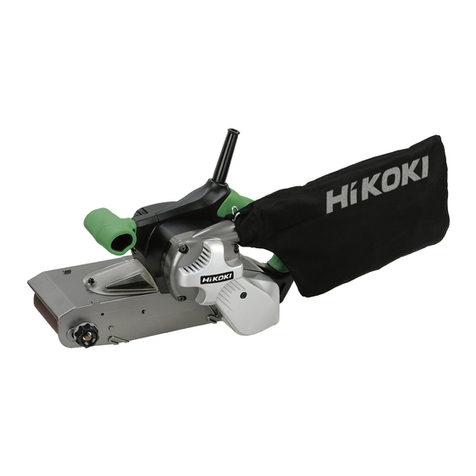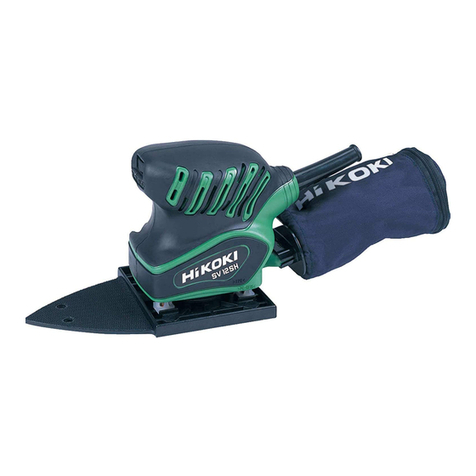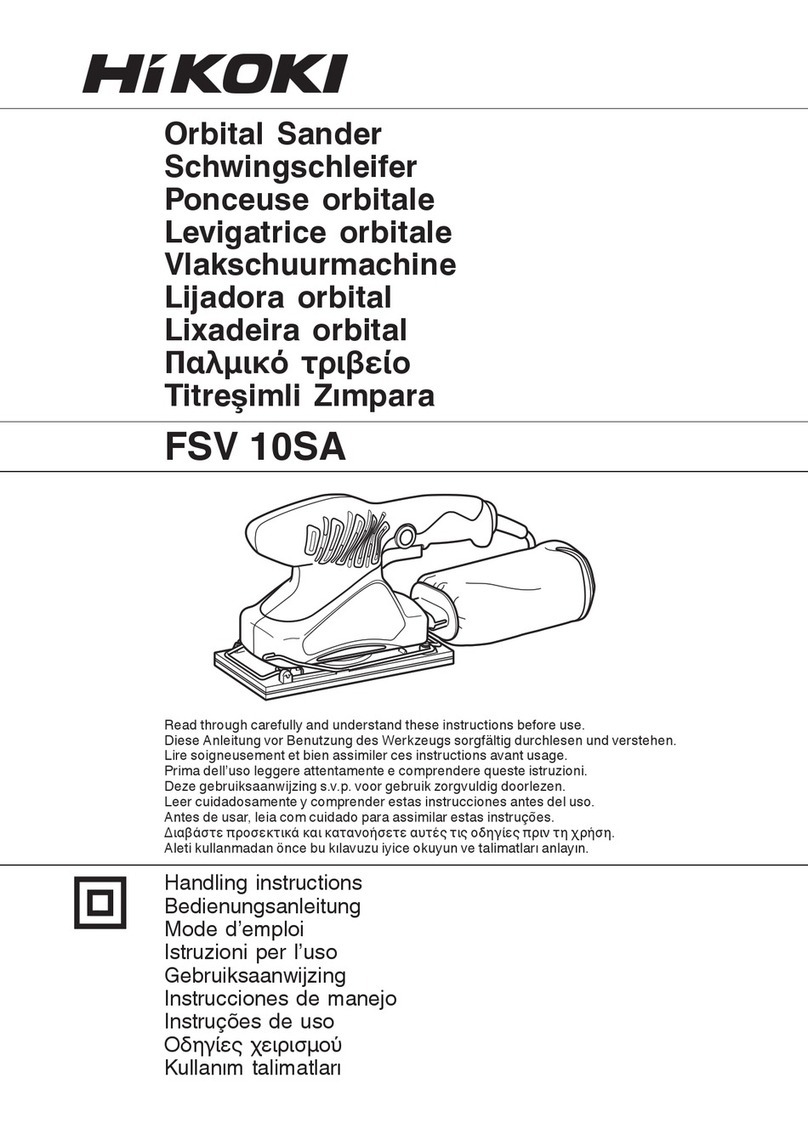
English
5
PRACTICAL OPERATING PROCEDURES
CAUTION
Never apply water or grinding fluid when sanding. This
could result in electrical shock.
1. Switching the sander ON and OFF
By pulling the trigger and pushing the stopper, the
switch will remain ON even when the trigger is released,
promoting continuous, efficient operation. By pulling the
trigger again, the stopper is released and the switch is
turned OFF.
CAUTION
Never turn the power switch ON when the sander is
contacting the surface to be sanded. This is necessary
to preclude damage to the material. The same applies
when switching the power OFF.
2. How to hold the orbital sander
While gripping the knob with one hand and the handle
with the other, lightly press the sander against the
surface to be sanded so that the sanding paper uniformly
contacts the surface, as shown in Fig. 6. DO NOT
apply excessive pressure to the sander while sanding.
Excessive-pressure may cause overload of the motor,
reduced service life of the sanding paper, and lowered
sanding or polishing efficiency.
3. How to move the orbital sander
For optimum operating efficiency, alternately move the
sander forward and backward at a constant speed and
balance.
4. Changing the rotating Speed (model SV12V only)
SV12V has an electronic control system which can be
used to set the rotating speed between 4000 and 10000
revolutions per minute.
As shown in Fig. 7, dial position “1” is for minimum speed
and position “5” for maximum speed.
MOUNTING THE OPTIONAL ACCESSORIES
1. Mounting the magic pad.
Loosen the six screws.
Remove the pad and attach the magic pad.
CAUTION
Replace the pad only. Use the other parts without
removing them.
2. Mounting the cleaner adapter (for models SV12V
and SV12SD) (Fig. 8)
After mounting the dust collector hose onto the cleaner
adapter, mount the cleaner adapter onto the unit in the
same way as mounting the dust bag.
MAINTENANCE AND INSPECTION
1. Empting and cleaning the Dust Bag (for models
SV12V and SV12SD)
If the dust bag contains too much saw dust, dust
collection will be affected. Empty the dust bag when it
gets full.
Remove the dust bag, open the fastener, and dispose of
the contents.
2. Inspecting the sanding paper
Since use of worn-out sanding paper will degrade
efficiency and cause possible damage to the pad, replace
the sanding paper as soon as excessive abrasion is
noted.
3. Inspecting the mounting screws
Regularly inspect all mounting screws and ensure that
they are properly tightened. Should any of the screws be
loose, retighten them immediately. Failure to do so could
result in serious hazard.
4. Inspecting the carbon brushes (Fig. 10)
The motor employs carbon brushes which are
consumable parts. Since an excessively worn carbon
brush can result in motor trouble, replace the carbon
brushes with new ones having the same carbon brush
No. shown in the figure when it becomes worn to or near
the “wear limit”. In addition, always keep carbon brushes
clean and ensure that they slide freely within the brush
holders.
5. Replacing carbon brushes
○Disassembling
(1) Loosen the two screws on the top cover, and remove the
top cover. (Fig. 11)
(2) Lift out the brush holder together with the carbon brush,
while being very careful not to forcibly pull the internal
wires within the brush holder.
(3) Remove the carbon brush from the brush holder.
○Reassembling
(1) Insert the brush terminal into the brush holder. Turn the
brush terminal 90˚.
(2) While maintaining this brush terminal position as
explained in (1), insert the new carbon brush into the
brush holder.
(3) While pressing the carbon brush against the outside wall
of the housing's bearing compartment, insert the brush
holder into the housing's original position.
(4) Place the internal wire in the specified position. Be
very careful not to allow the internal wire to contact the
armature or rotating parts of the motor. (Fig.12)
(5) Replace the top cover, while being careful to ensure it
does not pinch the internal wire, and secure it firmly with
the two screws.
CAUTION
Should the internal wire be pinched by the top cover
or come in contact with the armature or rotating parts
of the motor, a serious danger of electric shock to the
operator will be created. Exercise extreme caution in
disassembling and reassembling the motor, following the
above procedure exactly.
DO NOT attempt to disassemble any parts other than
those necessary to effect replacement of the carbon
brush.
6. Maintenance of the motor
The motor unit winding is the very “heart” of the power
tool. Exercise due care to ensure the winding does not
become damaged and/or wet with oil or water.
7. Service parts list
CAUTION
Repair, modification and inspection of Hitachi Power
Tools must be carried out by an Hitachi Authorized
Service Center.
This Parts List will be helpful if presented with the tool to
the Hitachi Authorized Service Center when requesting
repair or other maintenance.
In the operation and maintenance of power tools, the
safety regulations and standards prescribed in each
country must be observed.
MODIFICATIONS
Hitachi Power Tools are constantly being improved
and modified to incorporate the latest technological
advancements.
Accordingly, some parts may be changed without prior
notice.
NOTE
Due to HITACHI’s continuing program of research and
development, the specifications herein are subject to
change without prior notice.
HiKOKI
HiKOKI
HiKOKI's
HiKOKI
HiKOKI
000BookSV12VAsia.indb5000BookSV12VAsia.indb5 2019/01/2115:28:512019/01/2115:28:51

